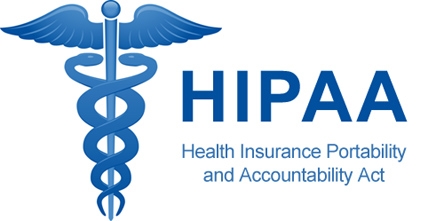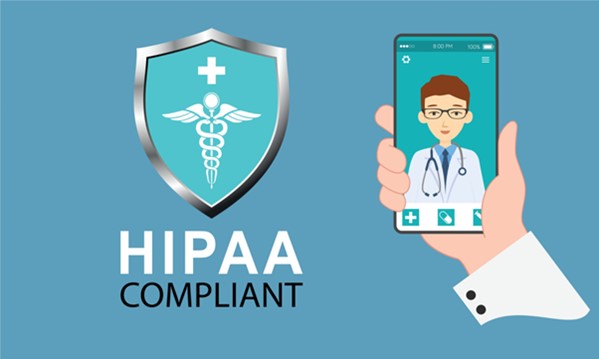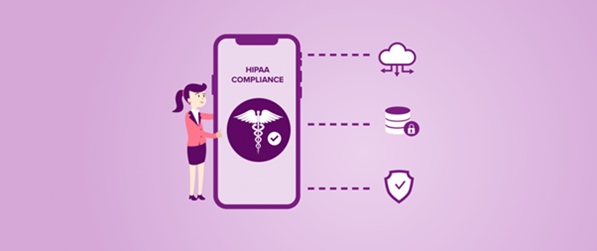
The creation of medical applications aiming at enhancing patient care, optimizing workflows, and raising engagement among patients has significantly increased as the need for healthcare services rises. The need for them to adhere to HIPAA regulations, however, grows as the number of such applications rises.
The US Congress established the Health Insurance Portability and Accountability Act (HIPAA) in 1996 in order to protect the security and privacy of patient health information (PHI) by setting national guidelines for managing it.
In this article, we will discuss the importance of HIPAA compliance, examples of HIPAA compliant apps, its features as well as cover the pain points in HIPAA compliant app development.
The Importance of HIPAA Compliance
For a variety of reasons, HIPAA compliance is essential when it comes to the creation of medical applications.
First of all, HIPAA compliance guarantees that PHI is safe regarding unauthorized use, access, or disclosure. Access restrictions, encryption, and secure data transmission are only a few of the required administrative and technical safeguards used by medical apps that adhere to HIPAA rules.
Secondly, HIPAA compliance also fosters confidence and trust among patients and healthcare professionals. Healthcare providers want to comply with HIPAA regulations, while patients want assurance that their PHI is treated properly and confidentiality. A HIPAA-compliant medical application conveys the developer’s dedication to protecting patient privacy and security, which helps foster an atmosphere of trust and confidence between patients and healthcare professionals.
Thirdly, HIPAA laws violations can have serious consequences for both the application developer and the healthcare company using it. HIPAA violations can result in large fines, legal consequences, and harm to both parties’ reputations. Such risks can be reduced, and the developer and healthcare organization stay safe from potential financial and legal penalties by creating a HIPAA compliant medical application.
Types of Applications That Need to Comply with HIPAA Compliant
Not all medical applications must adhere to HIPAA regulations. In general, HIPAA rules must be followed by software that handles or stores PHI. Electronic health records (EHR), applications for medical billing, and telemedicine are a few examples of such applications.
Applications that do not process or store PHI, however, are not required to abide with HIPAA rules. Examples of applications that do not need to comply with HIPAA regulations are fitness apps, wellness apps, and apps with general health information.
Why Some Applications Need to Comply with HIPAA and Others Do Not
Due to the sensitive nature of this data, HIPAA regulations require that apps handling or storing PHI comply with their requirements. Any information that can be used to identify a patient, including their name, date of birth, social security number, and medical history, is considered to be PHI. PHI is guaranteed to be private, secure, and only accessible by those who are permitted to do so under HIPAA standards.

Application Examples
Numerous medical applications need to be HIPAA compliant. Here are a few instances:
Electronic health record (EHR) systems: Systems for keeping electronic health records (EHRs), which include a patient’s medical history, treatment plans, and other health-related information, are digital replacements for paper-based medical records. EHR systems must be HIPAA compliant due to the large quantity of PHI they store.
Telehealth platforms: Through video conferencing or other remote methods, telehealth platforms enable remote consultations between patients and healthcare professionals. For these platforms to guarantee that patient security and privacy are preserved during remote consultations, HIPAA compliance is required.
Health and fitness apps: Apps for health and fitness collect and save data on a user’s dietary habits, physical activity routine, and vital signs. Some exercise and wellness applications may also collect medical data, such as blood sugar levels or prescription regimens. If these apps transmit or keep PHI, they must adhere to HIPAA rules.
Medical research applications: Data from clinical trials and other research studies are collected and preserved by medical research apps. To protect patient privacy and security, these applications must adhere to HIPAA requirements if they collect or keep PHI.
Medication management applications: Patients who use medication management software can check their medication schedules, renew prescriptions, and get dosage reminders.
These are but a few examples of medical apps that must follow HIPAA guidelines. No matter what kind of app is used, it is essential to make sure that patient security and privacy are protected by appropriate technical and administrative procedures.
The Necessary Features of Such Applications
Medical applications must have a specific set of features which should be considered during HIPAA compliant app development:
- Access restrictions: Only people who are permitted can access PHI
- Encryption: PHI is protected from unauthorized access
- Audit trails: Keeps track of who and when had access to PHI
- Data backup and recovery: PHI can be restored in the case of an unforeseen event
The HIPAA Compliant App Development Process
Planning and paying close attention to detail are essential during the HIPAA compliant app development. The steps in the process of developing an app that complies with HIPAA are as follows:
Conduct a risk assessment
The first step in HIPAA compliant app development is to find any potential security risks and vulnerabilities, a risk assessment should be conducted before any development work begins. The evaluation should list every data element that the application uses or stores and establish the degree of sensitivity of that data.
Determine the appropriate security measures
Once the risks have been determined, the proper security measures must be put in place to reduce them. Implementing PHI encryption, access controls, and systems for authentication and authorisation are part of this.
Develop a security plan
The security procedures that will be used to safeguard the PHI in the application should be outlined in a security plan. All staff members who will have access to PHI need to have a copy of this security plan that is both written and accessible.
Develop a contingency plan
Having a backup strategy in place is crucial in the case of a PHI breach. This strategy should specify the steps to be done to alert patients and regulatory agencies, as well as the actions to be taken to stop further violations.
Conduct ongoing monitoring and maintenance
In order to preserve the application’s security and compliance once it has been developed and launched, it is crucial to regularly monitor and maintain it. This involves carrying out routine security testing, updating security protocols, and giving staff members who have access to PHI ongoing training.
Implement documentation and training
Every employee with access to PHI should get training on HIPAA compliance and the security measures used in the application. Regulatory bodies should be able to see the documentation of the training and security policies upon request, and it ought to be maintained.
Finalize the compliance process
The execution of the compliance procedure is the final stage of the HIPAA compliant app development process. To make sure that all security measures, paperwork, and training adhere to HIPAA regulations, a full evaluation of all security measures, documentation, and training must be conducted. The program can be installed and used with confidence after the compliance procedure has been successfully completed because it is safe and complies with HIPAA rules.
A thorough process that includes risk assessment, suitable security measures, documentation and training, ongoing monitoring and maintenance, and a final compliance evaluation is needed during a HIPAA compliant app development. Developers may preserve the privacy and security of patient health information by following these procedures to ensure that their applications are safe and compliant with HIPAA rules.

Conclusion
The creation of medical applications must strictly adhere to HIPAA requirements. The HIPAA standards ensure patient privacy and security, promote confidence and trust between patients and healthcare professionals, and prevent potential legal and financial consequences. To protect patient privacy and security, HIPAA requirements must be followed by all medical applications that handle PHI, including electronic health record systems, telehealth platforms, health and fitness apps, prescription management applications, and medical research applications. Developers must emphasize HIPAA compliance during the HIPAA compliant app development process as healthcare technology develops to ensure the proper use and protection of patient information. By doing this, healthcare institutions may provide top-notch care while keeping patient confidence and following HIPAA rules.




